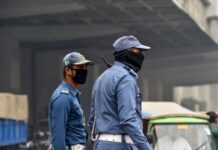The health department in Sindh province has confirmed a significant increase in malaria cases, with more than double the number compared to the past two years. Simultaneously, dengue cases have recently started to emerge.
Official statistics indicate 31,000 malaria cases in Hyderabad division in August alone, along with 828 dengue patients, although no fatalities have been reported. Both diseases are transmitted by different mosquito species, and several factors contribute to their prevalence. Ignorance, unfavourable climatic conditions, poor sanitation, and inadequate preventive measures in rural areas foster mosquito breeding.
Malaria and dengue tests are expensive, making them inaccessible to the economically disadvantaged, earning malaria the label of a “disease of the poor.” Dengue fever cases are also on the rise in Punjab, Khyber Pakhtunkhwa, and Islamabad, with expectations of further increases in the next two months. The ongoing monsoon season has left stagnant rainwater in many areas, necessitating immediate drainage. In rural regions, a significant portion of the population sleeps with open windows and doors or in open spaces during the summer, creating vulnerability to mosquito bites. To address these issues, health departments and local authorities must conduct mosquito-spraying efforts.
Additionally, citizens should protect their homes with mosquito repellents and ensure that clean water containers are well-covered to prevent the breeding of the specific dengue mosquito.
Amin Wastoo
Hoshab
Mosquito-born diseases surge
Must Read
Pakistan partially reopens Torkham and Chaman crossings for UN aid
ISLAMABAD: Pakistan has partially reopened the Torkham and Chaman border crossings with Afghanistan for United Nations humanitarian shipments after nearly 50 days of closure.
Foreign...





















